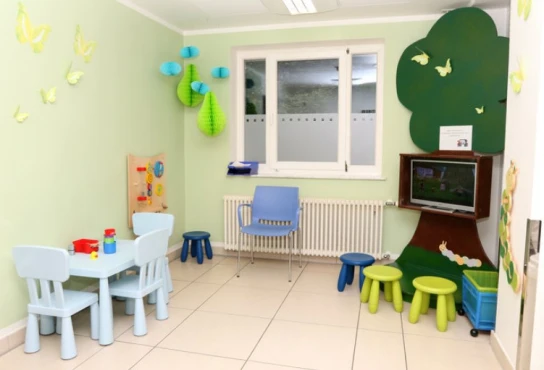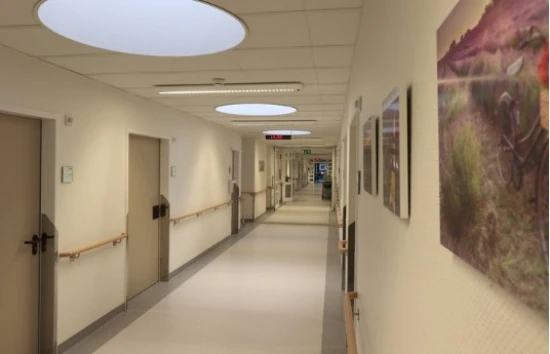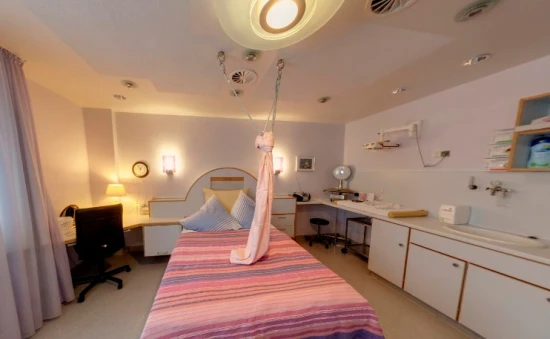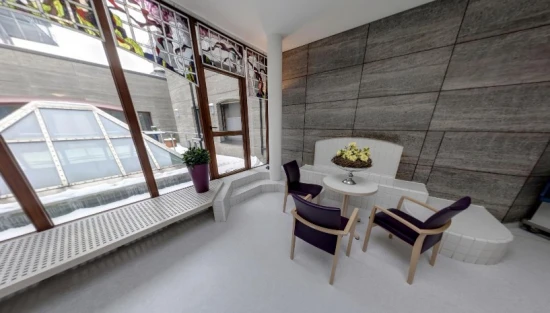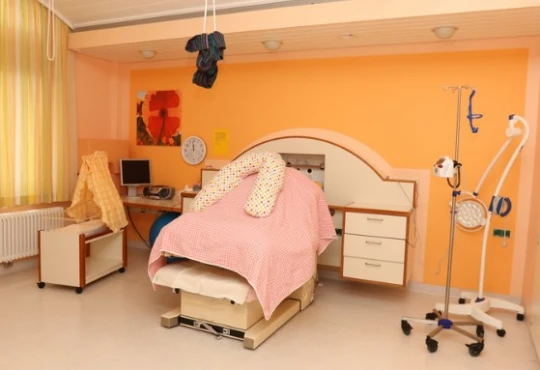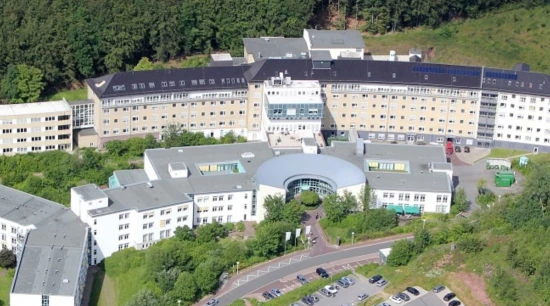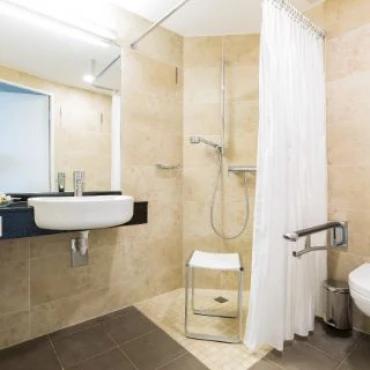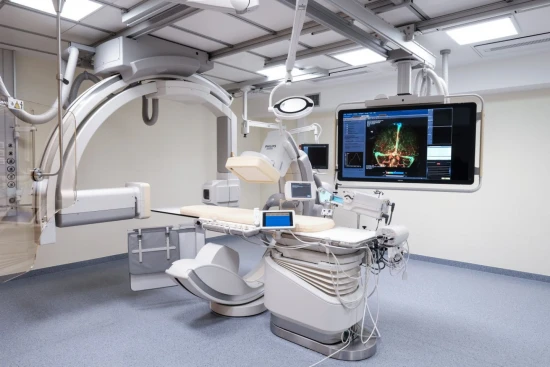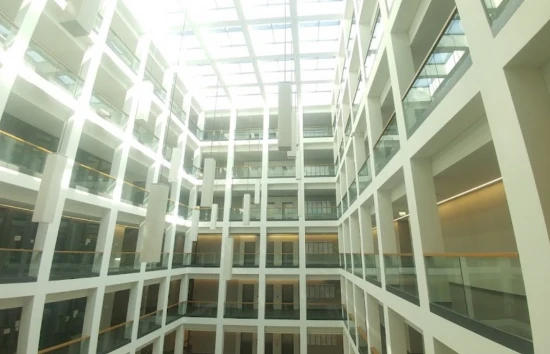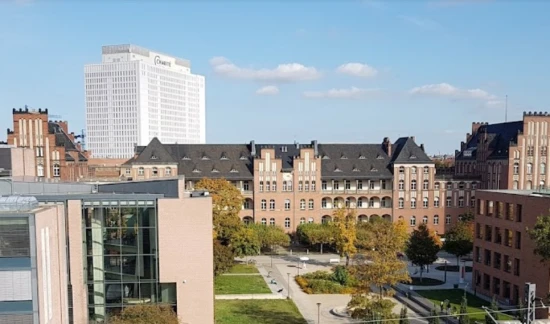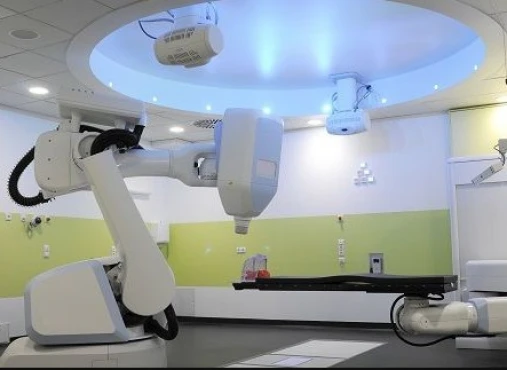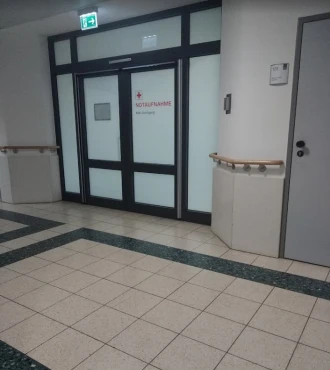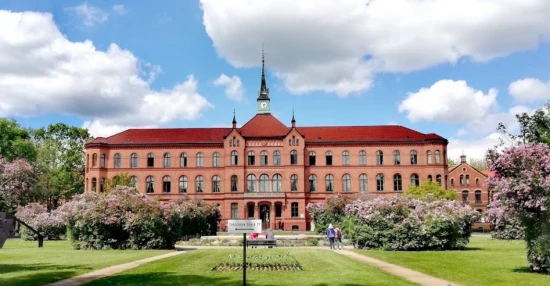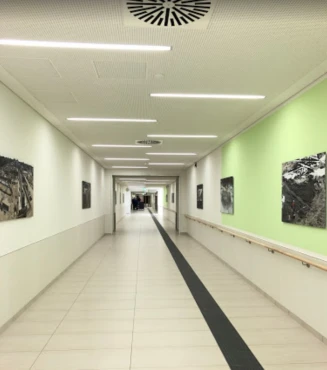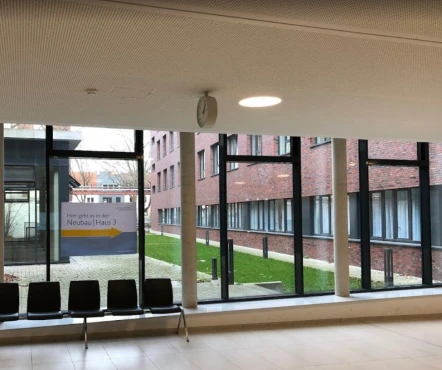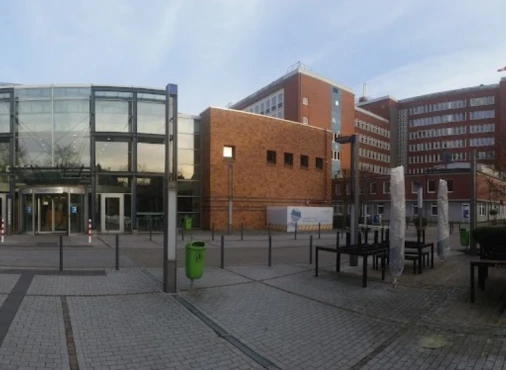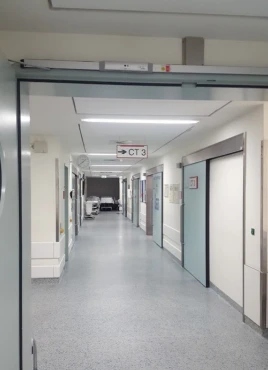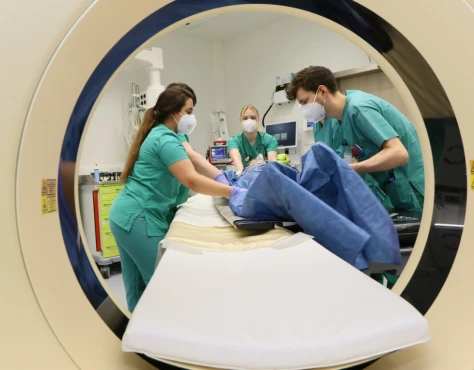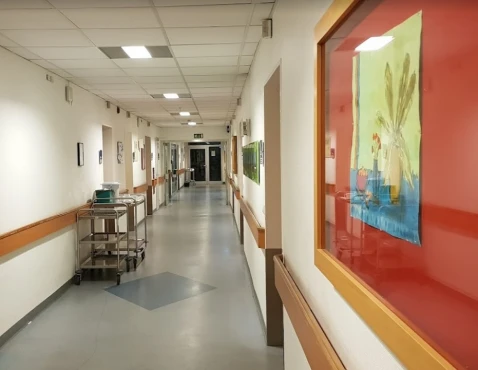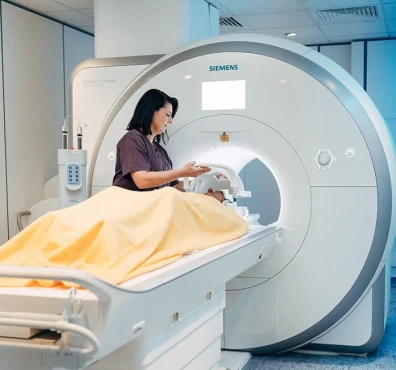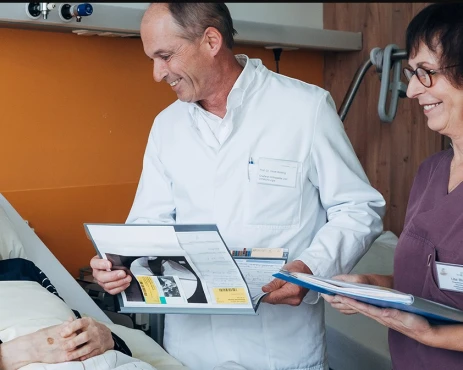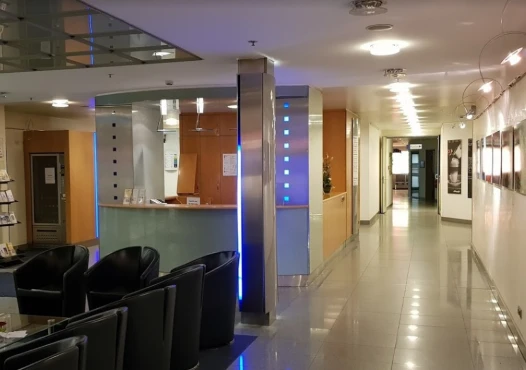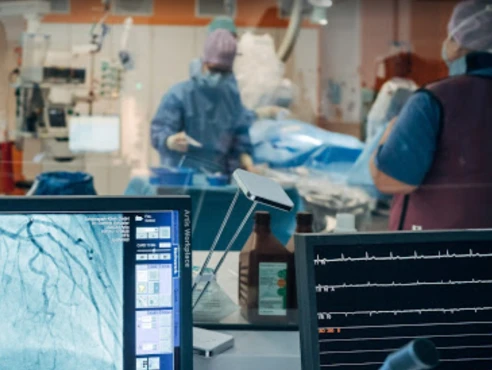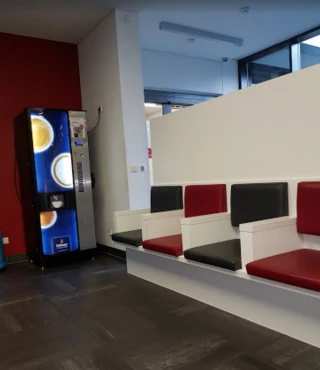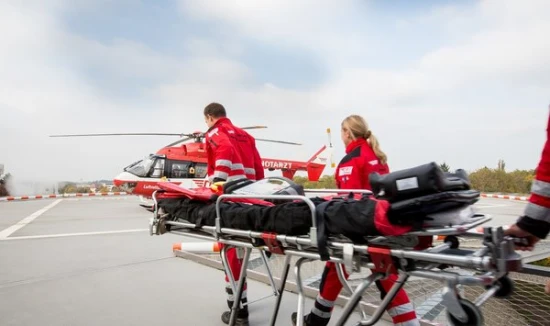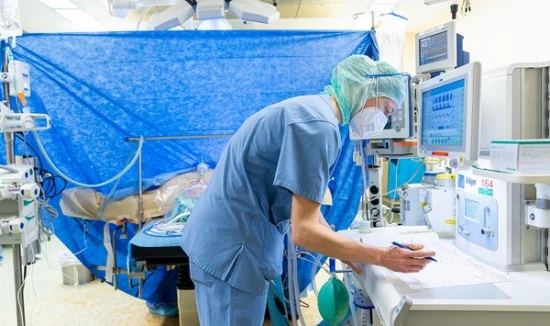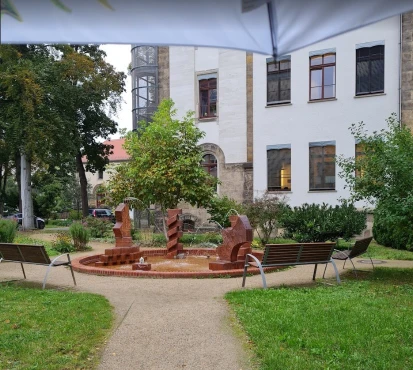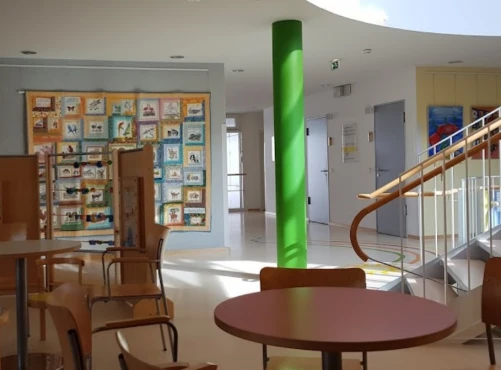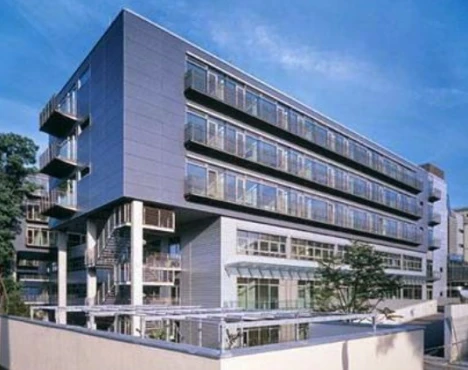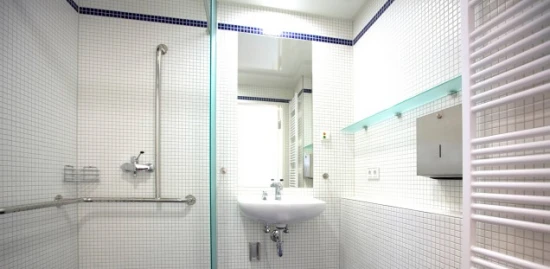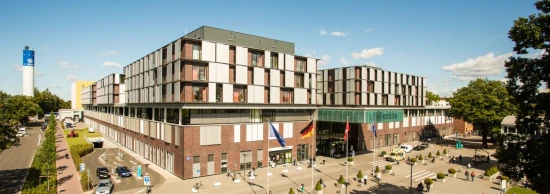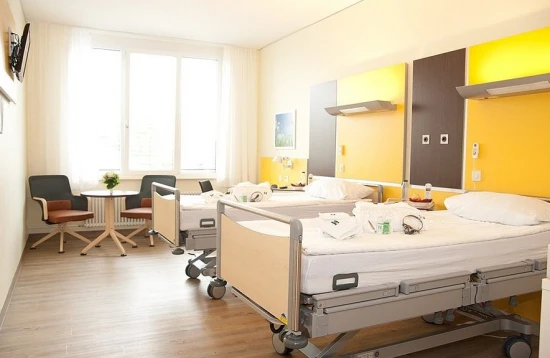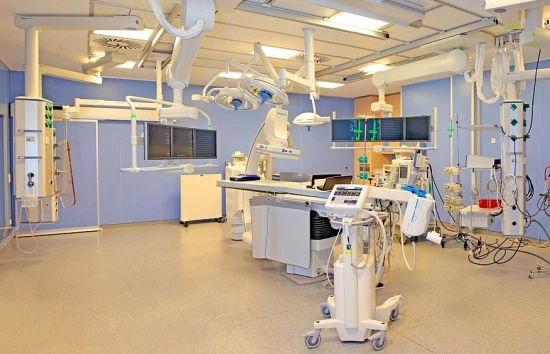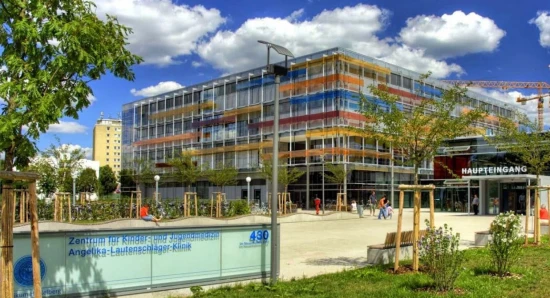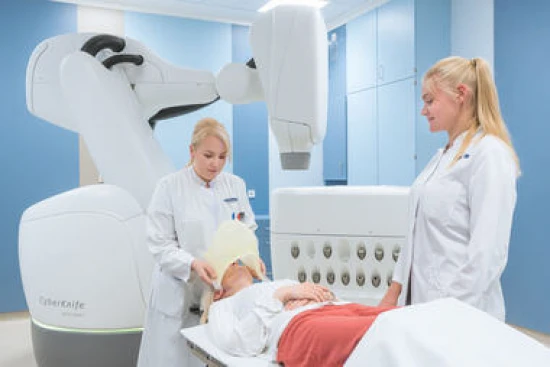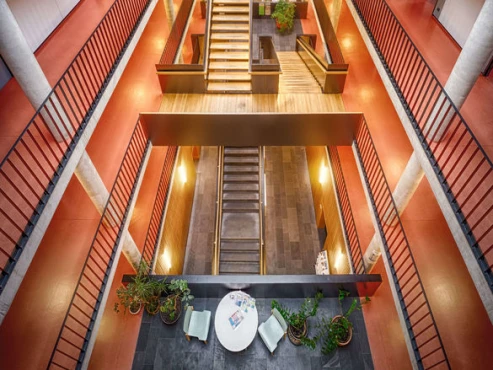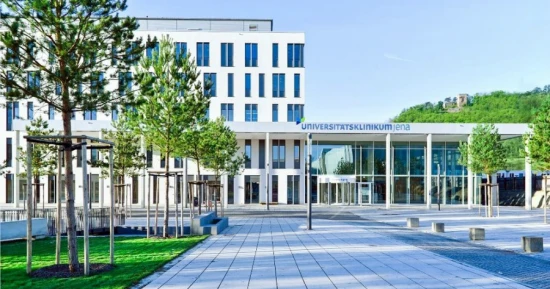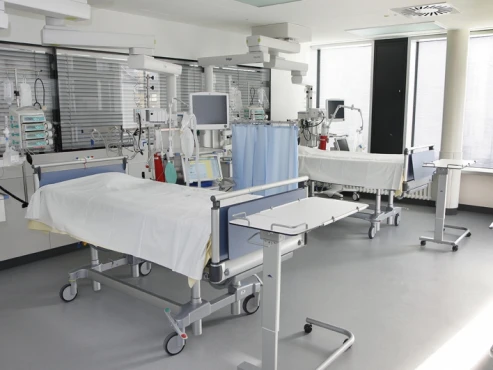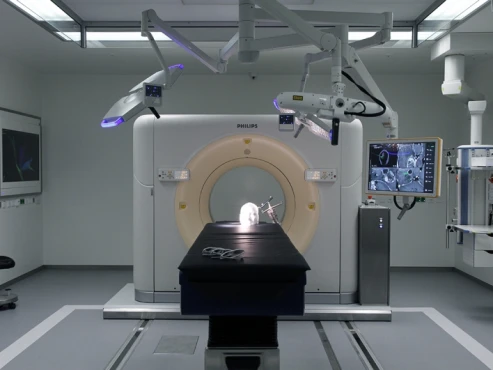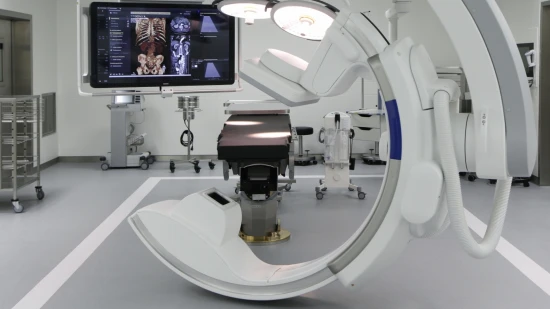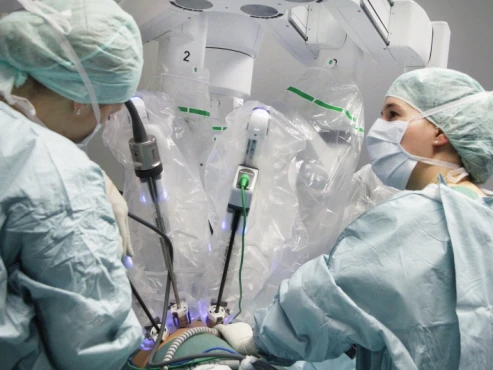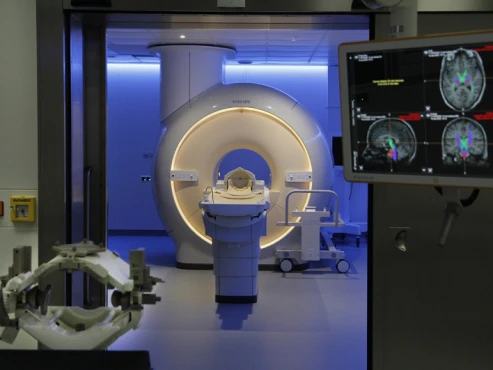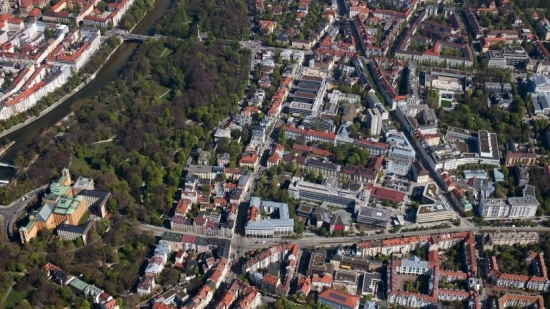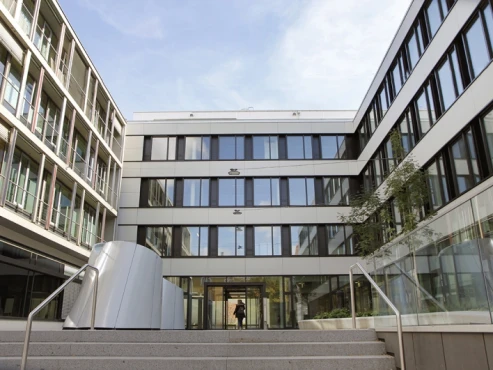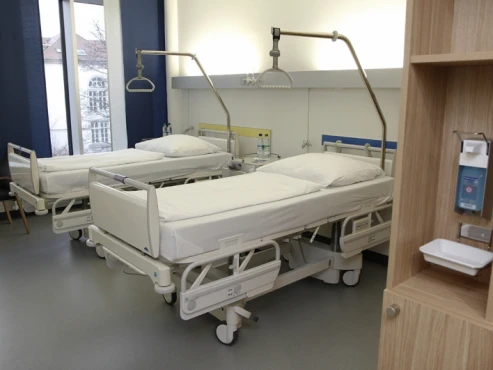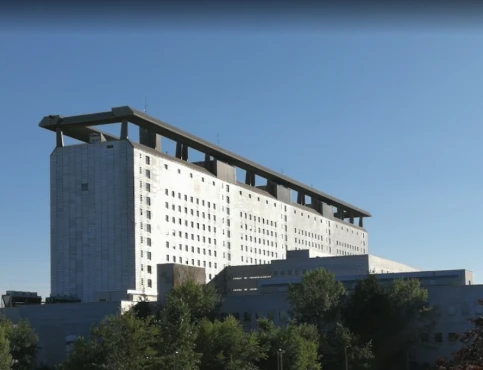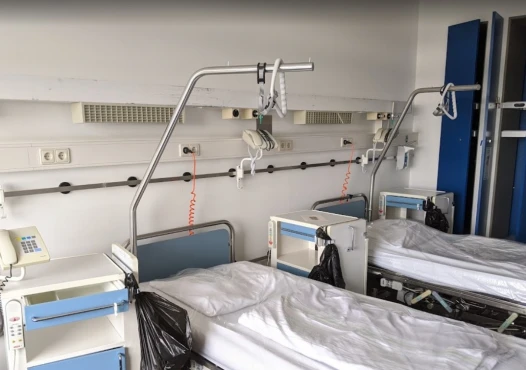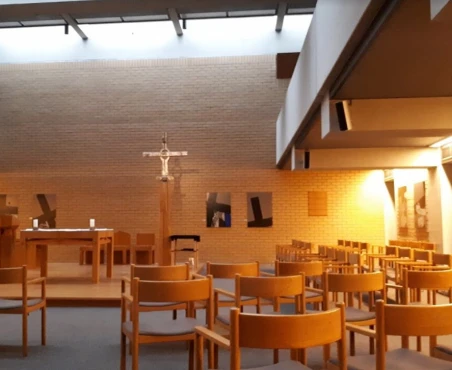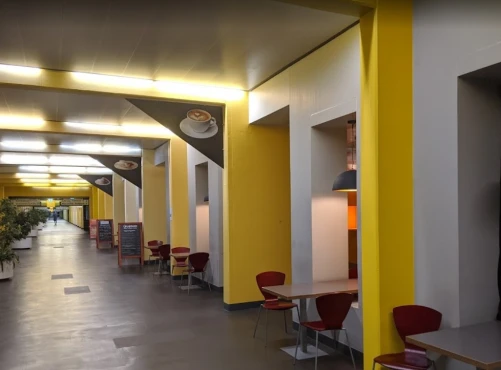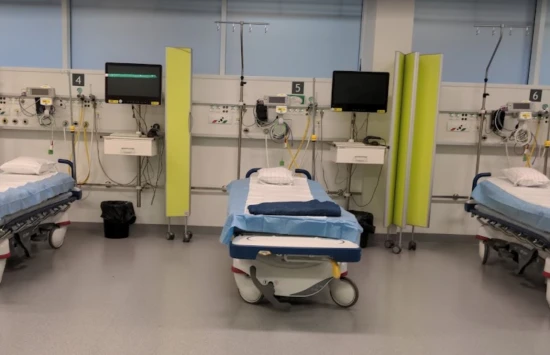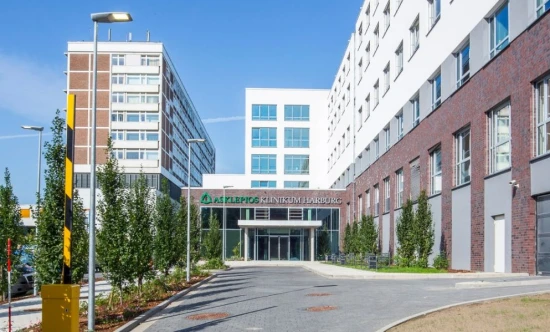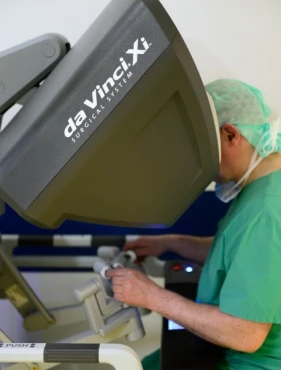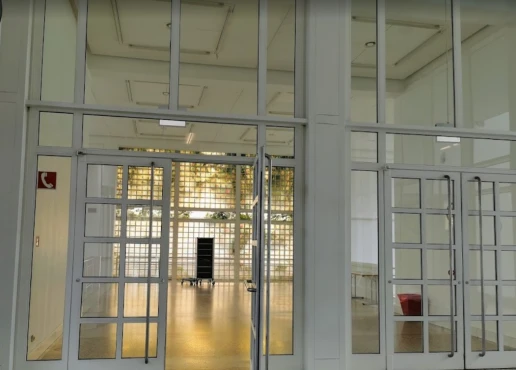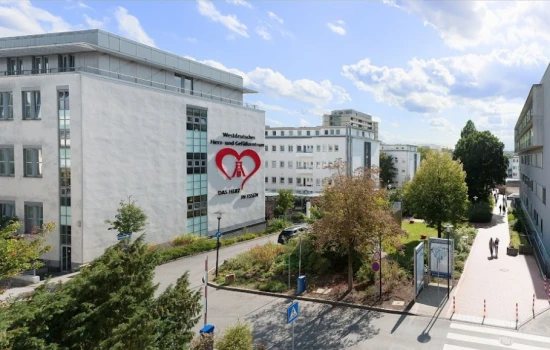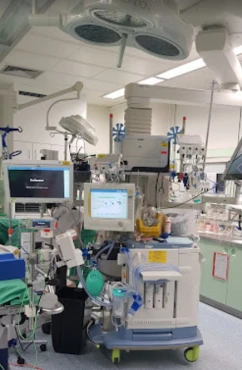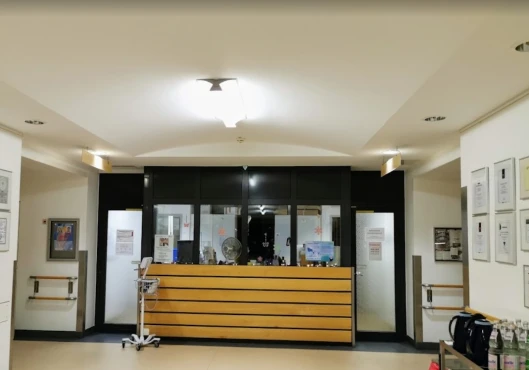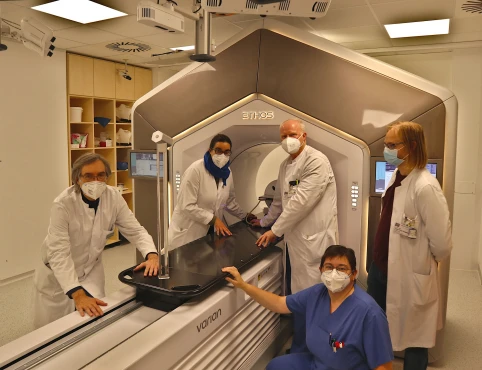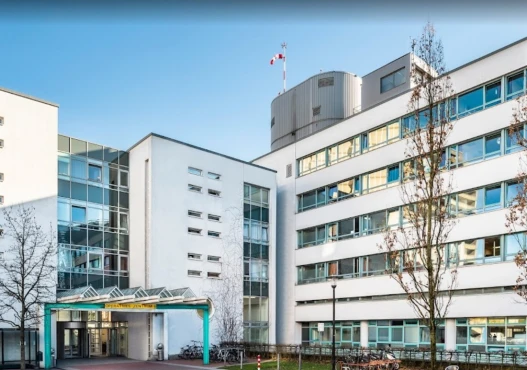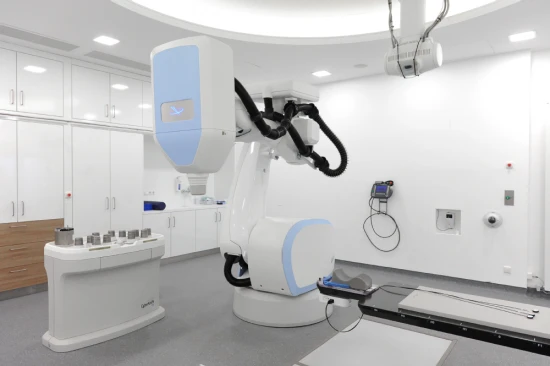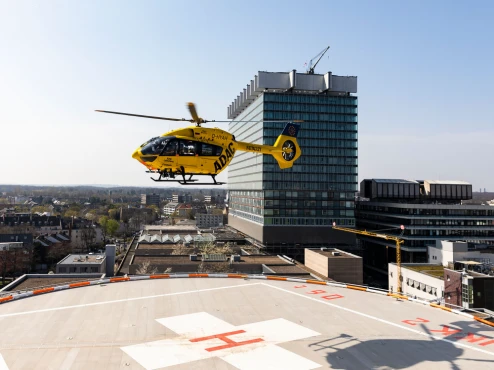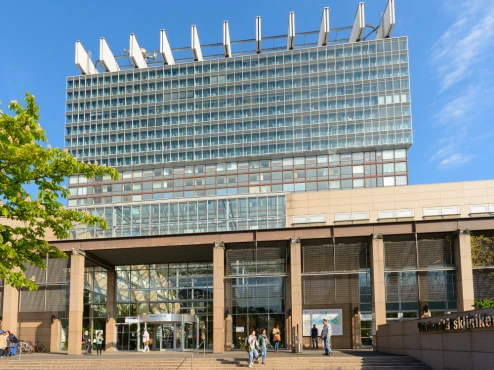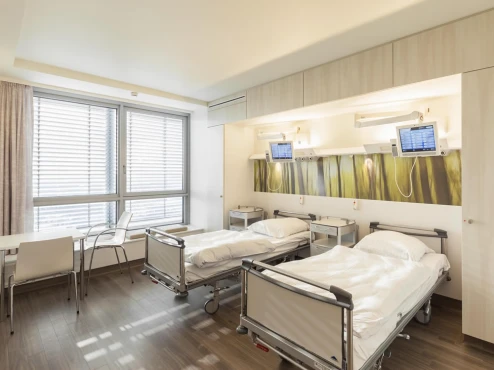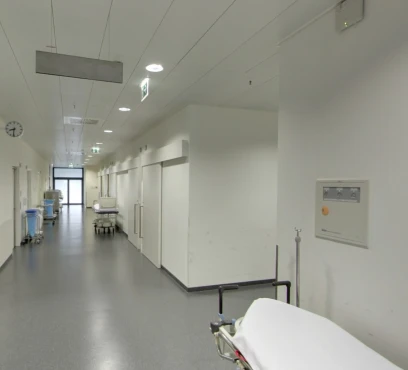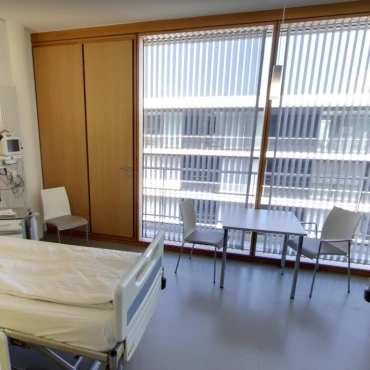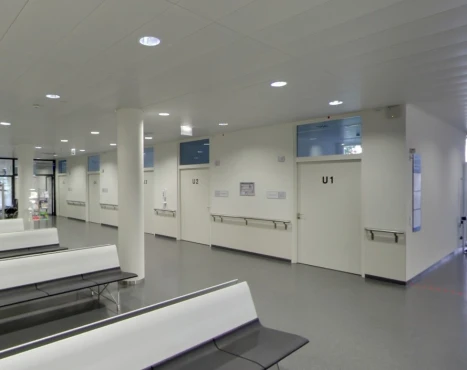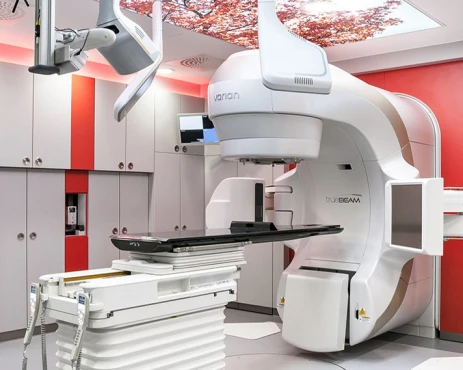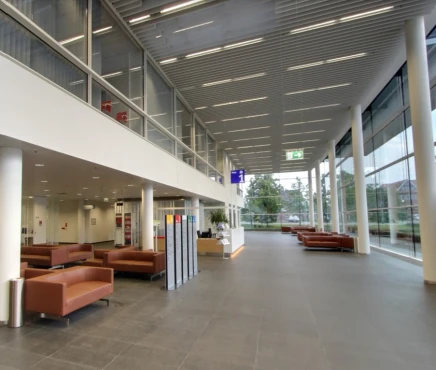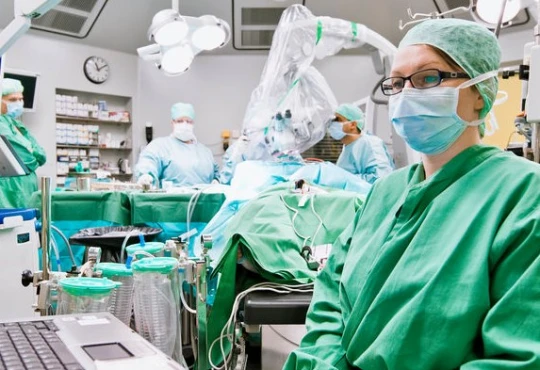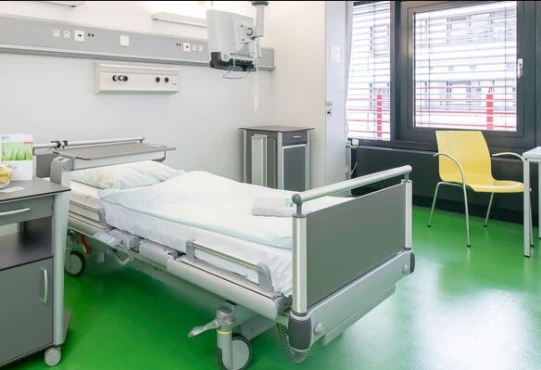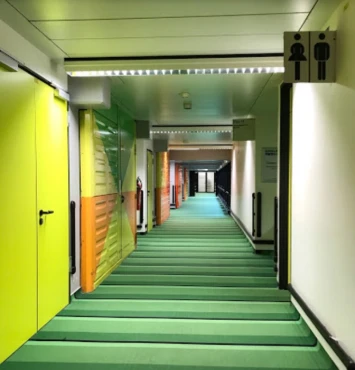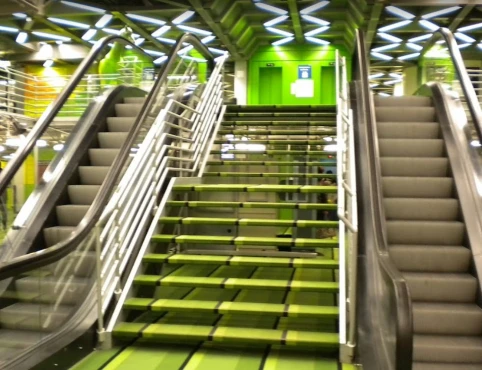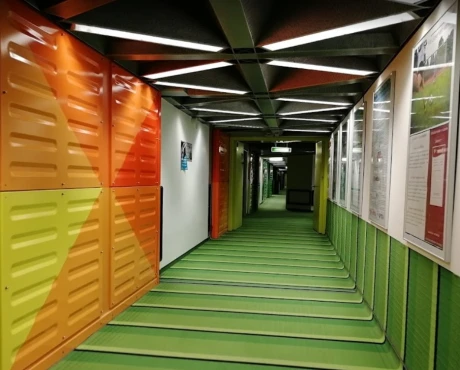Deep brain stimulation (DBS) in 24 Neurosurgery clinics in Germany
24 clinics specializing in Neurosurgery providing
Deep brain stimulation (DBS)
Deep brain stimulation (DBS) is a surgical procedure where electrodes are implanted in specific regions of the brain and connected to a device that delivers electrical impulses, used to treat neurological conditions such as Parkinson's disease or essential tremor.
Read more...
procedure in Germany.
Sorted by:
Relevance
Rating
Cost of procedures
Relevance
Prices for selected procedures, total:
≈ $157,656
Prices for popular procedures:
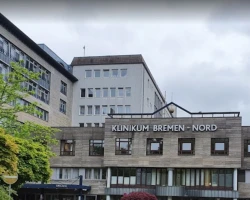
Bremen, Germany
Specializations: Cardiac surgery, Vascular surgery, Thoracic surgery, Neurosurgery, Orthopedic surgery, Oncology
From obstetrics to geriatrics, the Bremen-Nord Clinic, with around 970 employees, offers all medical services that are important for the people in Bremen-Nord and the
read more
Prices for selected procedures, total:
≈ $157,656
Prices for popular procedures:
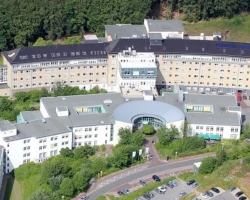
Seesen, Germany
Specializations: Cardiac surgery, Vascular surgery, Thoracic surgery, Neurosurgery, Spine surgery, Orthopedic surgery, Oncology
The Asklepios clinics in Schildautal were built between 1954 and 1956 by the state insurance company in Braunschweig and were a lung sanatorium until 1974.
read more
Prices for selected procedures, total:
≈ $157,656
Prices for popular procedures:

Hamburg, Germany
Specializations: Cardiac surgery, Vascular surgery, Thoracic surgery, Neurosurgery, Spine surgery, Orthopedic surgery, Oncology
For more than 190 years, our hospital has been representing medical expertise and responsibility. As a maximum care hospitalwith five medical centers and 20 specialist
read more
Prices for selected procedures, total:
≈ $157,656
Prices for popular procedures:
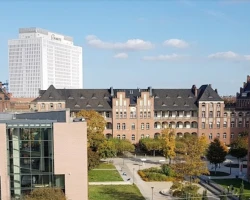
Berlin, Germany
Specializations: Cardiac surgery, Vascular surgery, Thoracic surgery, Neurosurgery, Spine surgery, Orthopedic surgery, Oncology
Charité is one of the largest university hospitals in Europe. All of our clinical care, research and teaching is delivered by physicians and researchers of
read more
Prices for selected procedures, total:
≈ $157,656
Prices for popular procedures:
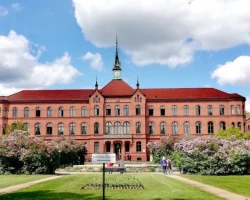
Berlin, Germany
Specializations: Cardiac surgery, Vascular surgery, Thoracic surgery, Neurosurgery, Spine surgery, Orthopedic surgery, Oncology
Languages: English, Russian, Spanish; Castilian
The KEH has 760 hospital beds and places in thirteen departments. The fields of surgery and internal medicine are each differentiated into several specialist competencies.
read more
Prices for selected procedures, total:
≈ $157,656
Prices for popular procedures:
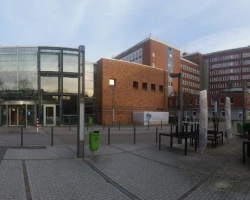
Bremen, Germany
Specializations: Cardiac surgery, Vascular surgery, Thoracic surgery, Neurosurgery, Spine surgery, Orthopedic surgery, Oncology
The Klinikum Bremen-Mitte offers its patients competent and efficient medical, nursing and psychosocial care and is a maximum care hospital. We have all the necessary
read more
Prices for selected procedures, total:
≈ $157,656
Prices for popular procedures:
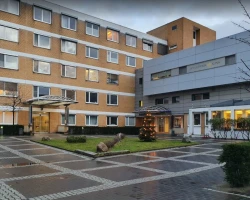
Berlin, Germany
Specializations: Cardiac surgery, Vascular surgery, Thoracic surgery, Neurosurgery, Spine surgery, Orthopedic surgery, Oncology
Languages: English, Turkish
The Schlosspark-Klinik is a hospital for acute and regular care, idyllically situated at the Schlosspark Charlottenburg. Together with its partner clinic, the Park-Klinik Weißensee, it
read more
Prices for selected procedures, total:
≈ $157,656
Prices for popular procedures:
Prices for selected procedures, total:
≈ $157,656
Prices for popular procedures:
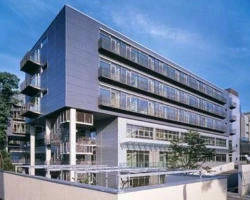
Dresden, Germany
Specializations: Cardiac surgery, Vascular surgery, Thoracic surgery, Neurosurgery, Spine surgery, Orthopedic surgery, Oncology
The University Hospital Carl Gustav Carus Dresden offers medical care at the highest level of care. As a maximum-care hospital, it covers the entire spectrum
read more
Prices for selected procedures, total:
≈ $157,656
Prices for popular procedures:
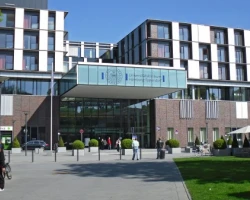
Hamburg, Germany
Specializations: Cardiac surgery, Vascular surgery, Thoracic surgery, Neurosurgery, Spine surgery, Orthopedic surgery, Oncology
Languages: Arabic, English, German, Russian
Knowledge – Research – Healing through Shared Competence We are one of Europe´s most modern clinics. Here specialists from all fields of medicine are brought
read more
Prices for selected procedures, total:
≈ $157,656
Prices for popular procedures:

Krefeld, Germany
Specializations: Cardiac surgery, Vascular surgery, Thoracic surgery, Neurosurgery, Spine surgery, Orthopedic surgery, Oncology
Languages: English, Russian
As a modern hospital of maximum care, we offer you state-of-the-art medicine. This includes excellently trained doctors and nursing staff, innovatve medical technology and treatment
read more
Prices for selected procedures, total:
≈ $157,656
Prices for popular procedures:
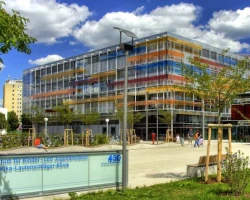
Heidelberg, Germany
Specializations: Cardiac surgery, Vascular surgery, Thoracic surgery, Neurosurgery, Spine surgery, Orthopedic surgery, Oncology
Languages: Arabic, English, Russian
More than six hundred years ago, the first German university was founded in Heidelberg. Today, it attracts international acclaim for its life sciences – especially
read more
Prices for selected procedures, total:
≈ $157,656
Prices for popular procedures:
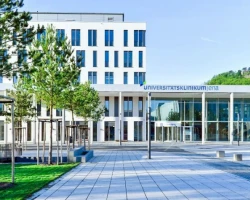
Jena, Germany
Specializations: Cardiac surgery, Vascular surgery, Thoracic surgery, Neurosurgery, Spine surgery, Orthopedic surgery, Oncology
With more than 5,600 employees and more than 50 different facilities, the Jena University Hospital is a large company whose organization requires a widely ramified
read more
Prices for selected procedures, total:
≈ $157,656
Prices for popular procedures:

Munich, Germany
Specializations: Cardiac surgery, Vascular surgery, Thoracic surgery, Neurosurgery, Spine surgery, Orthopedic surgery, Oncology
Languages: English, Spanish; Castilian
Klinikum rechts der Isar is the university hospital of the Technical University Munich (TUM), and provides the ideal setting in which to offer the best
read more
Prices for selected procedures, total:
≈ $157,656
Prices for popular procedures:
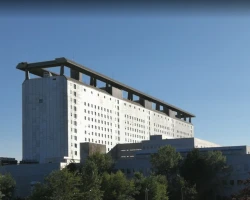
Munich, Germany
Specializations: Cardiac surgery, Vascular surgery, Thoracic surgery, Neurosurgery, Spine surgery, Orthopedic surgery, Oncology
With its two Munich locations, Campus Großhadern and Campus Downtown, is one of the largest university hospitals in Germany and Europe. Every year, around 500,000
read more
Prices for selected procedures, total:
≈ $157,656
Prices for popular procedures:

Harburg, Germany
Specializations: Cardiac surgery, Vascular surgery, Thoracic surgery, Neurosurgery, Spine surgery, Orthopedic surgery, Oncology
Asklepios Klinikum Harburg is an academic teaching hospital of Universitätsklinik Hamburg-Eppendorf, Germany. The main building contains a state of the art emergency department, as well
read more
Prices for selected procedures, total:
≈ $157,656
Prices for popular procedures:
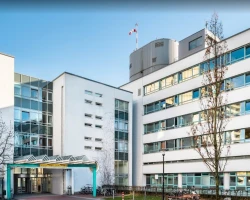
Essen, Germany
Specializations: Cardiac surgery, Vascular surgery, Thoracic surgery, Neurosurgery, Spine surgery, Orthopedic surgery, Oncology
The University Hospital Essen is part of the University Medicine Essen hospital group . This includes 15 other subsidiaries , including the Ruhrland Clinic, the
read more
Prices for selected procedures, total:
≈ $157,656
Prices for popular procedures:
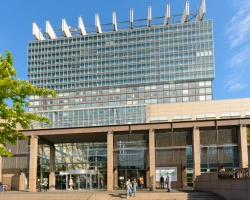
Köln, Germany
Specializations: Cardiac surgery, Vascular surgery, Thoracic surgery, Neurosurgery, Spine surgery, Orthopedic surgery, Oncology
Germany is one of the world's leading medical countries worldwide. Its 33 university hospitals form the highest tier of the country's sophisticated healthcare system. The
read more
Prices for selected procedures, total:
≈ $157,656
Prices for popular procedures:
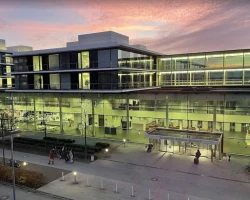
Düsseldorf, Germany
Specializations: Cardiac surgery, Vascular surgery, Thoracic surgery, Neurosurgery, Spine surgery, Orthopedic surgery, Oncology
Languages: Arabic, English, French, Russian
The University Hospital Düsseldorf (UKD), together with the medical faculty of the Heinrich Heine University, assumes a special function in our healthcare system. The basis
read more
Prices for selected procedures, total:
≈ $157,656
Prices for popular procedures:
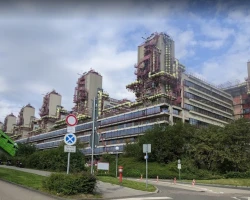
Aachen, Germany
Specializations: Cardiac surgery, Vascular surgery, Thoracic surgery, Neurosurgery, Spine surgery, Orthopedic surgery, Oncology
Languages: English
As a university maximum care provider, we offer you top-quality medicine with a human face at the RWTH Aachen University Hospital. The architecturally and organizationally
read more
Procedure price distribution in Germany
Deep brain stimulation (DBS):
$161.1 K
This price found in Germany, Hamburg
$161.1 K
This price found in Germany, Hamburg
Minimum Average Maximum
Procedure prices in popular countries:
Deep brain stimulation (DBS):
Turkey
$35.0 K - 35.1 K
in
18 clinics
Israel
$63.9 K - 63.9 K
in
12 clinics
United States
$74.4 K - 113.0 K
in
13 clinics
China
$147.2 K - 147.2 K
in
4 clinics
Germany
$161.1 K - 161.1 K
in
24 clinics
Countries with the highest number of clinics offering the procedures treatment:
Deep brain stimulation (DBS):
worldwide
419 clinics
Brazil
34 clinics
India
32 clinics
Germany
24 clinics
Mexico
24 clinics
Colombia
23 clinics
Clinics grouping by rating
Clinic with the highest rating of 3.7 — Universitätsklinikum Carl Gustav Carus, Dresden in Dresden, Germany, clinic with the most reviews number of 1601 — University Medical Center Hamburg-Eppendorf (UKE) in Hamburg, Germany.
